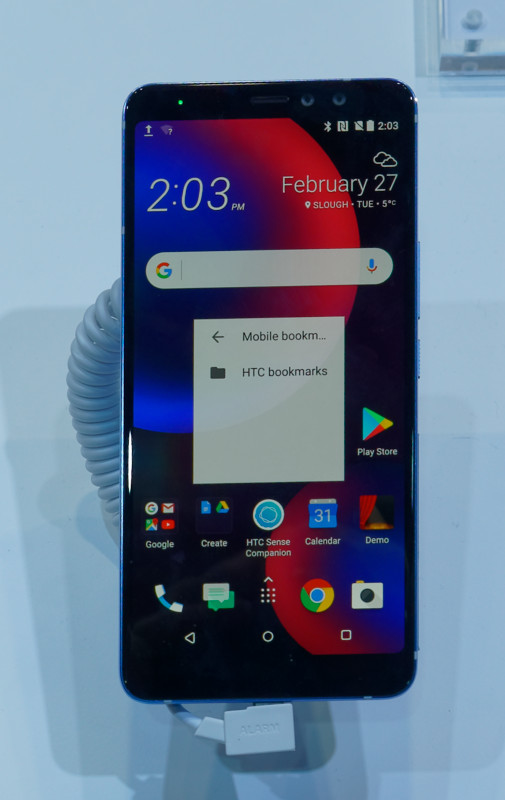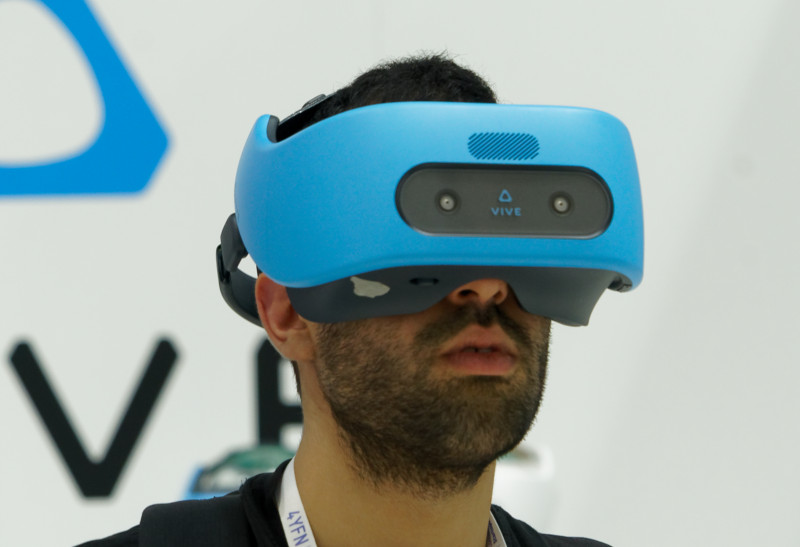HTC’s booth was mainly devoted to the various Vive products although there were also still some smartphones. That reduction in emphasis on smartphones is not surprising as the company has moved most of its smartphone staff to work for Google (HTC to Merge VR and Smartphone Divisions?)
The U11 was launched in 2017 and and the U11+ was added in November and is now to be distributed globally. The U11+ has a 6″ LCD QuadHD+ 1440 x 2880 resolution display with Gorilla Glass 5.
The U11 Eyes is being sold in China and was announced in January. It has the same size display as the U11+, but has FullHD+ resolution. It has Gorilla Glass 3 and is based on a Snapdragon 652 with 4GB/64GB and a 12mp main camera. It has dual 5mp selfie camera. It is certified to IP67.
 The HTC U11 Eyes is only being sold in China. Image:Meko
The HTC U11 Eyes is only being sold in China. Image:Meko
The U11 Life handset was launched in December, supports Android One and will be available globally. It has a 5.2″ 16:9 FullHD display with Gorilla Glass 3. Its based on a Snapdragon 640 and is configured with 3GB/32GB or 4GB/64GB. The battery is a 2600 mAh unit and it sells around €330. The cameras are both 16mp units.
There were several areas devoted to the Vive and offering demos of the Vive and Vive Pro (which we tried at CES HTC Vive Pro Matches Visuals of Samsung Odyssey) but also on show was the standalone Vive Focus which has only been available in China, so far. We hadn’t had a chance to try it, so far, so took the opportunity. The performance seemed quite acceptable to us, within the limits of the single OLED 2880 x 1660 resolution. The display refreshes at 75Hz and is powered by a Snapdragon 835.
 HTC’s Vive Focus is a standalone device, but is only sold in China. Image:Meko
HTC’s Vive Focus is a standalone device, but is only sold in China. Image:Meko

